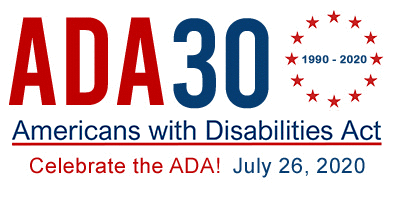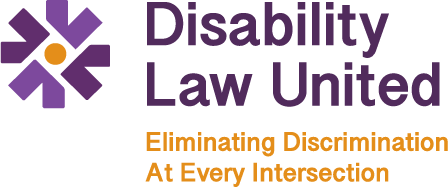
July 26, 2020 is the 30th anniversary of the Americans with Disabilities Act (ADA). During these 30 years, people with disabilities and their allies have used the ADA to reshape our society. Many people with disabilities have a place at the table and a clear path to get there both figuratively and literally. And yet much work remains to be done. This significant anniversary is a time to celebrate the many successes and renew our commitment to continued advocacy until all the barriers are gone and disability discrimination exists only as a part of history.
The foundational concepts of the ADA are accessibility and equality. These concepts overlap. So, for example, holding an event in a room that’s not accessible for wheelchair users is equivalent to posting a “no wheelchair users allowed” sign even if the organizers have no objection to people with mobility disabilities attending. Similarly, when a doctor’s office refuses to provide a sign language interpreter to a deaf patient, that office may as well say they don’t serve deaf people since they’re not offering equal services. There can be no accessibility without equality and vice versa.
I’ve had the good fortune to practice disability rights law for over 20 years. One of the things I love about this area of law is the variety of issues. People with all types of disabilities are protected by the ADA. And, with a little creativity and persistence, the ADA can be applied in some way to almost every situation and barrier. Early on the focus of ADA advocacy was physical accessibility for people with mobility disabilities. And that’s still an important focus because while many barriers have been removed, more remain. And, infuriatingly, more continue to be created.
In 2020 the ADA is being used to impact issues that were largely unimaginable in 1990. Technological advances have created the ability for people with print disabilities to vote independently and the ADA is the tool for ensuring that state governments modify their voting programs so that technology can be used. The COVID-19 pandemic has highlighted the importance of having plans in place for shortages of medical equipment, services, and supplies. The ADA is the tool for ensuring that people with disabilities are treated equally in those plans and by those implementing them. Supports and services exist now that enable people with significant disabilities to parent children. The ADA is the tool for making sure they are given the opportunity to do so.
So, here in 2020, there’s a whole array of people to advocate for and with and cases to work on to ensure accessibility and equality. Our colleagues and clients and the important issues we tackle together are the most exciting aspects of being an ADA attorney. And, yet, I can’t help but wonder why there are still so many barriers and so much discrimination 30 years after the ADA was passed. Shouldn’t everything be fixed by now? Of course, it should. This is why Disability Law United’s Accessibility Project fights with urgency to make the promise of the ADA real. Real for everyone. Real for every situation. We look forward to working together with our clients and colleagues to make sure that 30 years from now the ADA is a promise kept.
